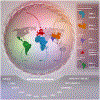Towards a Global View of Parkinson's Disease Genetics
- PMID: 38557965
- PMCID: PMC11060911
- DOI: 10.1002/ana.26905
Towards a Global View of Parkinson's Disease Genetics
Abstract
Parkinson's disease (PD) is a global health challenge, yet historically studies of PD have taken place predominantly in European populations. Recent genetics research conducted in non-European populations has revealed novel population-specific genetic loci linked to PD risk, highlighting the importance of studying PD globally. These insights have broadened our understanding of PD etiology, which is crucial for developing disease-modifying interventions. This review comprehensively explores the global genetic landscape of PD, emphasizing the scientific rationale for studying underrepresented populations. It underscores challenges, such as genotype-phenotype heterogeneity and inclusion difficulties for non-European participants, emphasizing the ongoing need for diverse and inclusive research in PD. ANN NEUROL 2024;95:831-842.
© 2024 The Authors. Annals of Neurology published by Wiley Periodicals LLC on behalf of American Neurological Association. This article has been contributed to by U.S. Government employees and their work is in the public domain in the USA.
Conflict of interest statement
Potential Conflicts of Interest
The authors declare that they have no conflict of interest.
Figures


References
Publication types
MeSH terms
Grants and funding
LinkOut - more resources
Full Text Sources
Medical

